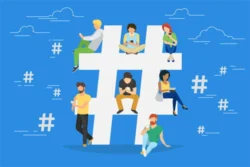In terms of communication, the world has come a long way from stone tablets and telegrams. Any information sent and received using today’s solutions can occur instantly, unlike days or weeks in the old methods. Thanks to these advances, the world is more interconnected than ever.
As with technology in general, it will demand more. The current infrastructure needs to keep pace with the demands of novel technologies, especially in telecommunication. The next generation of mobile devices and computers has to grow more powerful and reliable to handle them. For the consummate user, modernizing their gear is nothing short of an essential investment.
Here’s a review of what telecommunications may look like in the next few decades.
Customized System
The humble phone has evolved from being a medium for two humans to talk despite the distance. People can configure their phones and mobile devices to divert calls, block unwanted calls, or even allow callers to leave a recording after a beep.
However, this level of customization is more apparent in marketing. Businesses, big and small, can set up a more intricate system to bring callers to the correct department or point person with a few prompts from the dial pad. From the business’s side, it can quickly dial up contacts to promote limited offers of its products and services.
Current technology enables such a system to be employed with few resources. For instance, a business can add a Virtual PBX for work from home or office-based setups with a computer with the correct specs. It’s also not limited to one user since any linked terminal can operate using the same number.
More Text Messages
An estimated five billion people worldwide send and receive text messages every day, with another billion to be added by 2025. It shouldn’t come as a surprise, given that smartphone users spend the equivalent of over a month on their devices every year. Depending on where you stand, the statistic can either be shocking or opportune.
It’s easy to see why text messaging will remain a critical medium. Unlike emails, text messages get read more quickly since people are almost always on their phones. Replying is also much faster, as the average response time is 90 seconds compared to email’s 90 minutes, according to CTIA (Cellular Telecommunications Industry Association).
These advantages have driven businesses to increase their spending on business texting strategies. Text messages are ideal for alerting customers of limited offers and responding to customer queries and concerns. When used responsibly, these messages also won’t feel like outright spam.

A More Reliable Network
The increased demand for mobile devices and other smart gadgets has put a significant burden on the current 4G network. A 2018 study of network outage posts in social media discovered that the outages are happening almost daily. Contrary to popular belief, the reason for this is less on power failures but more on IT systems becoming more sophisticated.
The slow but steady rollout of the 5G network hopes to ease this burden. The technology promises a higher data transmission speed of 10 Gbps, which is a hundred times faster than the 4G network. The network utilizes millimeter-wave technology to reach these speeds but gets easily interrupted by obstacles like walls and even the users themselves.
Network providers work around this problem by building plenty of access points, which are smaller and blends with the environment better than cell towers. They’re also optimistic about its growth, with an estimated 3.5 billion 5G subscriptions in the next five years.
A Digital Brain
New technologies won’t necessarily mean they’re simpler. They may be easier to use from a user’s standpoint but harder to maintain for network technicians. As mentioned earlier, network outages will become more common if the system becomes too sophisticated to manage.
In light of this, artificial intelligence (AI) will be playing a more prominent role. Since it can manage more data than the human brain, AI-assisted systems can assess network issues through algorithms, directing technicians to the root causes. While it won’t make future telecommunications immune to problems (no such thing as perfect), it’ll reduce the likelihood of unplanned downtimes.
AI is also being used more in interacting with customers by communicating like a human agent nearly perfectly while collecting valuable data.
Conclusion
There are plenty of reasons to look forward to communicating within the next several years. Some traditional mediums like text messaging will benefit from a modernized infrastructure, giving users more control over the information they want to send and receive. Given this, you should get ready to invest in upgrading your means in the future.







